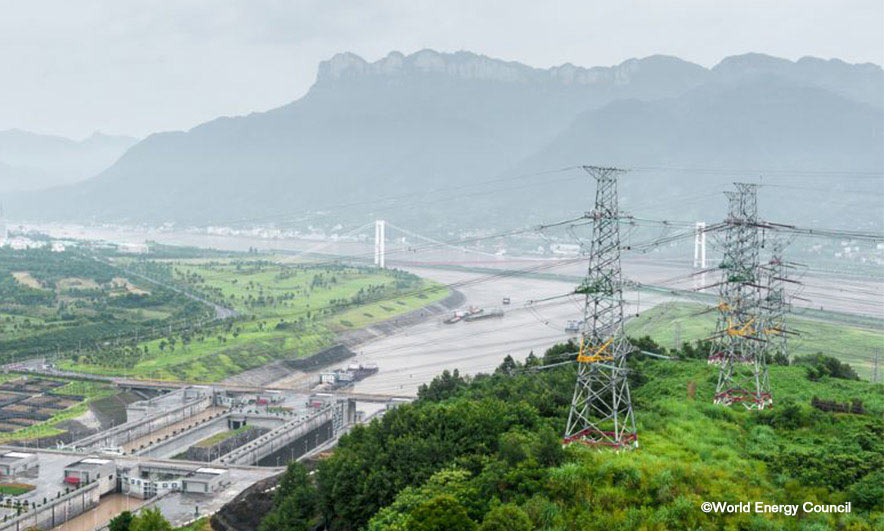Water, water everywhere - hydropower is the leading source of renewable energy

Hydropower continues to be the world’s leading source of renewable energy
Simply put, it is a form of renewable energy generated from water stored in dams or from flowing rivers to create electricity in hydropower plants. Like other forms of electricity generation, it uses a turbine to convert the energy of the flowing or falling water to turn the blades which, in turn, converts this mechanical energy into electrical energy. Hydropower now equates to over 90% of all renewable energy generated across the world, albeit with a very heavy percentage of that coming out of China (which is approaching 28% of the world’s total renewable electricity capacity) – it is big business.
Hydropower is, of course, dependent on rainfall but despite this is still arguably the most flexible and consistent of the renewable energy sources.
There are three main types of power station:
- Run of river – where the electricity is generated through the flow of the river
- Reservoir – where power is generated through the release of stored water
- Pumped storage – where stored water is recycled by pumping it back up to a higher reservoir to be released again.
In this way hydropower can meet both base load demand as well as peak and unexpected demands and accounts for a considerable percentage of installed power capacity in many regions of the world. Hydropower is not new - many plants have been operational for over fifty years. As a company, Eland Cables works extensively in the renewables sector and is actively involved in the refurbishment and upgrading of plants across the world.
When and where did it begin?
The world’s first hydroelectric power plant began operation in 1882 in Wisconsin, USA on the Fox River in Appleton. The plant – which later became known as the Appleton Edison Light Company – was the creation of H.J. Rogers (a local paper manufacturer) who had been inspired by Thomas Edison’s plans for New York. Unlike Edison’s plans (which worked on steam power) the Appleton plant used the natural energy of the Fox River - a technique still used and known as “Run of River”. When it first opened it only generated enough electricity to light Rogers’ home, a nearby building and the plant itself, but the concept of 'cheap, never ending power' had caught on and by the early 20th Century hydropower plants were being built across the world, generating significant amounts of electricity. It encouraged industrial growth in many regions and led to many US Government dam building projects to harness further energy from natural sources, controlling the release of water to match demand and production times.
Who uses this technology today?
The world’s largest hydroelectric plant (based on installed capacity) is the Three Gorges Dam on the Yangtze River in China. This enormous 2,335m long and 185m high structure was the biggest engineering project in China when it was started in 1994 - it incorporates 28 million cubic metres of concrete and 463,000 metric tonnes of steel in its design. Hydroelectric power generation began in 2003 and increased regularly until 2012 when the last turbine generator came on line. When all its 32 turbine generators are operating (together with two additional generators) the plant can produce 23,500 megawatts of electricity, which according to energy.gov is enough to power almost 12 million “average” homes.
What are the advantages of hydropower?
There are several benefits of generating electricity through hydropower:
- It is a domestic source of energy – allowing each state, region or country to produce their own energy rather than being dependent on international fuel sources.
- It is powered by water – relying on the water cycle, which is in turn powered by the sun, making it renewable and therefore more reliable than other forms of fuel such as fossil which are depleting.
- When “reservoir” style plants are created the body of water created is often also used for recreational purposes and therefore offers other commercial income streams.
- As hydropower can be generated “immediately” it can provide essential back-up power during major outages or disruptions.
What about disadvantages?
The building of large-scale dam projects often involves the controlled flooding of areas, submerging arable land, open countryside, and potentially displacing local (and poorer) communities when The process that generates the electricity also produces CO2 (carbon dioxide) running the turbines and generators so it is not the 'greenest' of 'clean' fuels. Yet its widespread use and the consistent volumes of power it creates means it has widespread appeal and can keep pace with drawdown in populous countries like China where there is an insatiable demand and growing urbanisation.
Is it still the future?
Older plants are being upgraded to deliver output increases designed to reflect new technology and increased demand, and new hydropower plants are being commissioned - there's certainly a good reason to choose hydro over traditional fossil fuels where possible. Whilst it has already shown its longevity as a power generation solution, whether it can be adapted to be 'greener' remains to be seen. As is always the case, each site must be considered on its own merits, and generating renewable power from hydro, solar, wind, tidal or other sources must be the norm going forward.